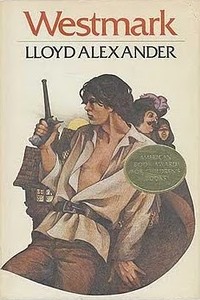If you were a bird, would you prefer to live in a lush, green forest or one that was blackened and burnt by a recent wildfire? Surprisingly, as we learn in this slim, fully-illustrated, children’s non-fiction book, several bird species actually prefer to live in burnt forests. Sneed B. Collard III discusses work done by University of Montana biologist Dick Hutto, who set out to learn about the natural environment of areas blackened by wildfires. Hutto and his wife Sue counted more than 100 species of birds in several dozen burn areas in 1988, a year where more than 72,000 separate wildfires burned more than five million acres of land in the United States.
Hutto’s research found that some birds, including American Robins, Chipping Sparrows, Mountain Bluebirds, several species of woodpeckers, and others, find abundant food and shelter in burnt areas, often more so than in what we would normally consider healthier, richer environments. It isn’t just birds that thrive; insects, wildflowers, shrubs and other life also flourish in areas that have been recently burned. Instead of trying to suppress more wildfires, perhaps we should allow more of them to burn naturally.
Hutto also questions the current practice of loggers going into a forest after a wildfire and removing the remaining trees for industry. His reasoning is that wildfires are part of nature, and such “salvaging” disturbs the natural burnt environment and can do damage to the wildlife that thrives in those areas. However, Dr. Steve Arno, considered to be a world expert in fire and forest management, believes that logging after a burn can be helpful in making sure a more severe fire does not occur after the first “because you have all that dead fuel on the ground.” Dr. Vicki Saab, a wildlife biologist working with the U.S. Forest Service, is also featured in the book. She and her team have come up with scientific models that show what logging can be done in a burned area to balance the needs of some woodpecker species with industry’s desire to log the still-standing trees. The author shows that where industry, politics and nature meet, answers are not always easy or clear.
Although this 47-page book was written for children ages 8-14, I thought it was a good distillation for adults, too, of the complex issues surrounding wildfire. Those of us who grew up hearing Smokey Bear’s admonition, “Only you can prevent forest fires!” may start looking at wildfires a little differently.
The book is illustrated with many beautiful photographs of birds and burn areas. Scattered throughout the text are ten “Featured Fire Birds.” A photo of the bird is accompanied by a box of short text about the bird and how it survives in a burned area. This book focuses on Western bird species, since that is where most of the wildfires take place and where much of the scientific work is being done, but Virginia readers may recognize American Robins, Dark-Eyed Juncos, Northern Flickers, Hairy Woodpeckers and House Wrens.
Check the WRL catalog for Fire Birds.





 This week I have selected titles in honor of Black History Month. For other recommended titles that I have already reviewed, please check out
This week I have selected titles in honor of Black History Month. For other recommended titles that I have already reviewed, please check out  The 1963 Newberry-award winning novel, A Wrinkle in Time, was a favorite of mine as a child. There was something so gently compelling about the storyline and I could relate so deeply to main character. Teenager Meg Murry doesn’t fit in, in school or seemingly anywhere else. She’s smart but stubborn, and fiercely protective of her family, even with its complete lack of normalcy. She is especially combative when anyone speaks badly about Charles Wallace, her youngest brother, who is definitely an odd child. Their father is missing, and his unexplained disappearance haunts the family, and leads Meg to be even more belligerent as she struggles to deal with the loss and the emptiness of not knowing what happened to him.
The 1963 Newberry-award winning novel, A Wrinkle in Time, was a favorite of mine as a child. There was something so gently compelling about the storyline and I could relate so deeply to main character. Teenager Meg Murry doesn’t fit in, in school or seemingly anywhere else. She’s smart but stubborn, and fiercely protective of her family, even with its complete lack of normalcy. She is especially combative when anyone speaks badly about Charles Wallace, her youngest brother, who is definitely an odd child. Their father is missing, and his unexplained disappearance haunts the family, and leads Meg to be even more belligerent as she struggles to deal with the loss and the emptiness of not knowing what happened to him.










